Water resistant strain gauge output pressure sensor for measuring hydrostatic liquid level or underwater system pressures. The low power consumption of wheatstone bridge strain gauge circuits are ideal for underwater measuring systems running off batteries.
Products
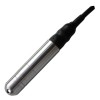 IMSL IP68 Stainless Steel 316L Hydrostatic Pressure Sensor - Water resistant pressure sensor for measuring hydrostatic pressures in the range of 0-0.5 mWC up to 0-100 mWC.
IMSL IP68 Stainless Steel 316L Hydrostatic Pressure Sensor - Water resistant pressure sensor for measuring hydrostatic pressures in the range of 0-0.5 mWC up to 0-100 mWC. IMCL IP68 Millivolt Output Level Sensor - Millivolt strain gauge output signal hydrostatic level sensor with an IP68 sealed electrical connection, stainless steel 316L, Duplex or PVC housing.
IMCL IP68 Millivolt Output Level Sensor - Millivolt strain gauge output signal hydrostatic level sensor with an IP68 sealed electrical connection, stainless steel 316L, Duplex or PVC housing.
 IMCL Submersible Absolute Reference Depth Sensor
IMCL Submersible Absolute Reference Depth Sensor SSPT Subsea Wet-Mateable Electrical Connector Pressure Sensor
SSPT Subsea Wet-Mateable Electrical Connector Pressure Sensor IMCL Low Cost Submersible Pressure Sensor
IMCL Low Cost Submersible Pressure Sensor IWSL Potable Water Submersible Level Sensor
IWSL Potable Water Submersible Level Sensor
Applications
 Vacuum insulation 15 psi absolute range millivolt output pressure sensor for air extraction use - An absolute pressure sensor for vacuum insulation air extraction use to measure vacuum pressure of air over a range of 0 to 15 psi abs from the G1/4 male process connection, and sending the corresponding mV/V signal through the submersible cable electrical connection.
Vacuum insulation 15 psi absolute range millivolt output pressure sensor for air extraction use - An absolute pressure sensor for vacuum insulation air extraction use to measure vacuum pressure of air over a range of 0 to 15 psi abs from the G1/4 male process connection, and sending the corresponding mV/V signal through the submersible cable electrical connection. Solar powered remote telemetry 10mWC range 2mV/V output tank contents sensor - Low cost submersible liquid level sensor with ceramic thick film strain gauge technology for tank contents monitoring over a 0 to 10 metre water column gauge hydrostatic pressure range and sending out a low current draw 2 millivolt per volt signal to remote solar powered telemetry instrumentation.
Solar powered remote telemetry 10mWC range 2mV/V output tank contents sensor - Low cost submersible liquid level sensor with ceramic thick film strain gauge technology for tank contents monitoring over a 0 to 10 metre water column gauge hydrostatic pressure range and sending out a low current draw 2 millivolt per volt signal to remote solar powered telemetry instrumentation.
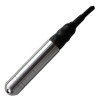 3 metre deep river water level transducer with low voltage output
3 metre deep river water level transducer with low voltage output 6 metre deep river level transducer with millivolt output
6 metre deep river level transducer with millivolt output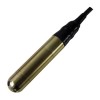 10 metre sea water depth sensor with millivolt output
10 metre sea water depth sensor with millivolt output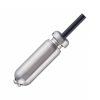 Solar panel, low power compatible, submersible 3m water tank level sensor
Solar panel, low power compatible, submersible 3m water tank level sensor
Related Product and Application Guides
 Hydrostatic Pressure
Hydrostatic Pressure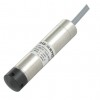 Submersible
Submersible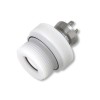 Hydrostatic Liquid Level Sensors
Hydrostatic Liquid Level Sensors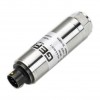 Millivolt Output Pressure Transducers
Millivolt Output Pressure Transducers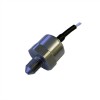 Pressure Transducers
Pressure Transducers
Related Help Guides
- What is the difference between a pressure transducer and a transmitter
- Dynamic pressure measurement with mV output transducers
- Using a screw-in or waterproof pressure transmitter to measure liquid level
- Improve the electrical termination of vented submersible pressure sensors
- How to reduce submersible pressure sensor failures caused by moisture ingress
- Using absolute pressure sensors to measure hydrostatic level
- Considerations for monitoring Landfill Water Level
- Why are Submersible applications so demanding of Pressure Transducers?
- Shunt resistor calibration explanation
- Problem with zero drift when installing submersible pressure sensor
